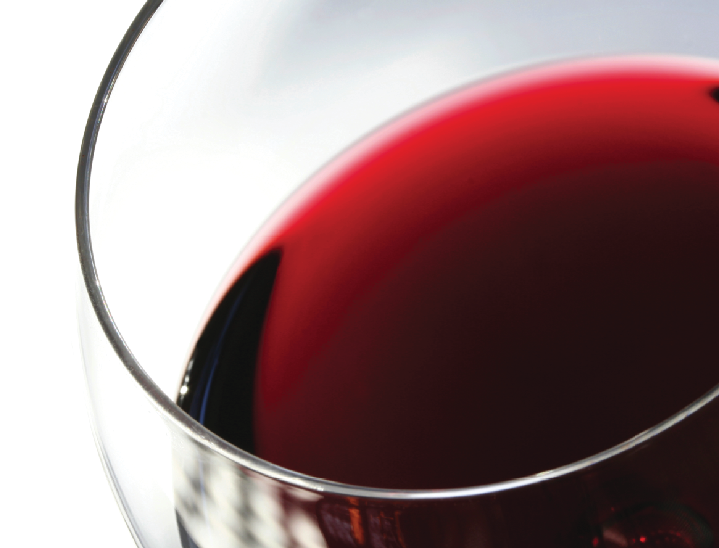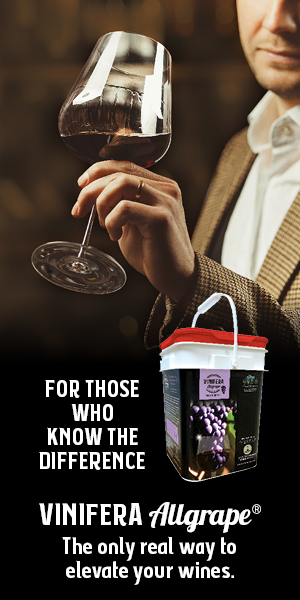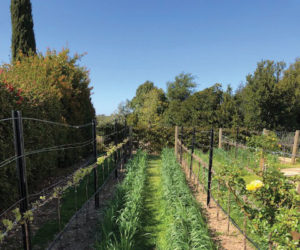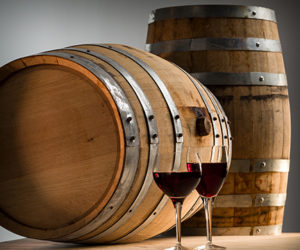Q
I am patiently sitting on a barrel of 2010 Sonoma Zinfandel that still has a bit of a bite. Is it too late to send it into malolactic fermentation (MLF)?
Jeff Adas
Via email
A
To shed light on your query, the Wine Wiz consulted the Winemaking Magic 8 Ball™ and the answer that floated to the top was, “Outlook not good.” If your 2010 Zinfandel still hasn’t gone through ML fermentation (where malic acid is consumed by lactic acid bacteria, turning it into lactic acid, softening the wine and preventing future ML fermentation in the bottle) it probably won’t.
Do I think you can restart your stuck ML fermentation? The short answer (before we get to the long one) is that if you have already added enough SO2 to your wine to be carrying a free SO2 of 10 ppm or above (I recommend a storage FSO2 of at least 25 ppm), it’s very unlikely that you’d be able to restart it as sulfur dioxide is extremely toxic to malolactic bacteria. If you haven’t added SO2 to your 2010 Zinfandel, I’d be amazed if you have anything drinkable left as in the intervening two years it’s probably been attacked by all manner of bacteria, ML or otherwise, Acetobacter being probably the most common infiltrators. If you like the flavor of your Zinfandel and are just worried about the malic acid hanging about, I recommend sterile filtering and making sure it has at least 30 ppm Free SO2 before bottling and moving on to preventive causes for your next batch. It’s probably high time to bottle up that 2010 anyway.
Your Zinfandel probably had a good reason (in the wine’s opinion, anyway) why it didn’t go through ML fermentation. Let’s go through the possibilities and you can figure out which (or which combination of) particular challenges your 2010 vintage faced. Most ML fermentations, no matter what the varietal, are repressed by the following — a low pH, high alcohol, low storage temperature or high sulfur dioxide (FSO2 above 10 ppm or a total SO2 above 60 ppm). My guess is that high alcohol is the most likely culprit because that is a perennial problem with Zinfandels. Zinfandel is notoriously known for uneven berry ripening, which means in one cluster you could get dried up “raisins” mixed in with sound berries. This makes it really difficult to estimate sugar and ripeness pre-picking. Once those raisins hit the fermenter, however, they soak up and all of a sudden your tame 24.5 °Brix must is sitting at a whopping 27.
High alcohol is only one condition that can lead to a stuck ML fermentation. ML bacteria (usually Oenococcus oeni, and various Lactobacillus and Pediococcus species) are a notoriously fastidious bunch, and even one environmental aspect out of whack can have a deleterious effect on the bacteria’s ability to survive. Unfortunately, unlike yeast, which are pretty robust, malolactic bacteria have to be coddled and gently handled throughout their lives in order to thrive and complete their job. Luckily many of the companies that sell yeast have also figured out we winemakers needed some better options when it came to selecting malolactic bacteria. They’ve developed some specialized bacteria strains to help us deal with challenging wine environments so now in addition to us trying to set up ideal conditions for ML fermentation, we now have more bacteria choices if Mother Nature doesn’t deal us a kind hand. Let me walk you through some things you might address in subsequent harvests to avoid what happened to your Zinfandel.
In California, where we usually have abundant sunshine and winemakers seem ever in pursuit of riper and lusher wine styles, the first stuck-MLF culprit tends to be high alcohols. Most ML bacteria like to have their environment be under 14.5% and will slow down or even die out if post-primary ethanol levels reach much beyond that level. You can certainly add water to your fermentation to bring your initial Brix down as well, but add judiciously so you’re not diluting too much flavor and color. If hydration isn’t your thing, Lalvin’s VP4 and PN4 products are both suited to high ethanol concentrations, 15.5% and 16.0% respectively.
In other parts of the winemaking world, especially areas with colder growing seasons than out West here, low pH (high acidity) is frequently the anti-ML culprit. With white winemaking, no matter where you are, a lower pH is often part of the winemaking style so it’s important to choose a strain of ML bacteria that can complete the job you’ve set up for it. In situations where I’ve got a pH under 3.40, I use CHR Hansen Viniflora CH35™, which is well suited to low pH and high total SO2 situations, especially helpful in years where you might add more SO2 at the crusher due to rot or Botrytis. You can also use potassium carbonate to bring acidity down, but I almost never resort to that because I don’t like the way it affects the mouthfeel and balance of the wine. After using potassium carbonate the juice just never seems to taste the same . . . however in an emergency (like a pH of 3.2 or lower) a little tweak might be recommended.
Is it temperature that stopped your ML bacteria? Some-times when a cold end to the harvest season follows our warm primary fermentations, the temperatures where we store our wines (basements, garages, outbuildings) drop right along with the thermometer. Temperatures much below 55 °F (13 °C) spell bad news for active ML fermentation so try to keep your ferments warm until they are through both primary and secondary fermentation. I’ve resorted to a few Rube Goldberg set-ups in order to keep my ML bacteria happy in a rapidly cooling cellar. Try using electric blankets around your barrel, electric space heaters blowing your metal drum or even immersion fish tank heaters in your carboys or barrel. Be sure to monitor temperatures to make sure the wine doesn’t cook, but keeping temperatures above 50 °F (10 °C) will help bacteria survive, and above 55–60 °F (13–16 °C) will keep them happy and fermenting. If you just can’t change the environment itself, try a low-temperature ML bacteria strain. Lalvin 31™ (see lallemandwineus.com for product information) and low-temperature-tolerant strains like it should help through challenging conditions. Each strain should have a minimum temperature it will ferment at, so check manufacturer’s details.
High sulfur dioxide is a pretty hard wine condition to fix. While free SO2 is particularly harmful to malolactic bacteria, a high total SO2 can also go some distance to suppressing ML bacteria activity. You can probably add up to 60 ppm SO2 to must or juice before fermentation and enough will get bound up so you will still be able to carry out an ML fermentation a couple of weeks later when the wine is dry, but free SO2, especially when in finished wine with alcohol over 13%, is extremely harmful to lactic acid bacteria. Some winemakers have reported success adding hydrogen peroxide to wine to reduce the amount of sulfur dioxide. I’ve never done it and don’t recommend it, as hydrogen peroxide is a powerful oxidizer (not to mention toxic to humans in high residual doses) and can forever change the flavor and aromas of your wine. I would sterile filter before I would think about adding hydrogen peroxide. The best way to avoid having high FSO2 in your wine being a barrier to ML fermentation is to not add too much at the wrong times in the first place. Never add more than 60 ppm before primary fermentation (30–40 ppm is much more reasonable) and never add SO2 until ML fermentation is complete, unless it just won’t go through after you’ve tried everything at which point you should add SO2 to save what quality you have and move on.
I would be remiss if I didn’t mention ML bacteria nutrients. Sometimes, especially with over-ripe or rot-infected fruit the must or juice will be low in micronutrients that ML bacteria need in order to thrive. If you anticipate MLF troubles, especially if you know you’re dealing with some of the adverse conditions I mention above, it might be wise to invest in a dose of ML bacteria nutrition (see below for sources online).
So let me shake up the Winemaking Magic 8 Ball™ again and ask it if your next ML fermentation will go to completion and unsurprisingly the answer is, “Signs point to Yes.”
Sources for specialized malolactic bacteria and nutrients:
Aeb-group.com
Americantartaric.com
Gusmerenterprises.com
Lallemandwineus.com
Scottlab.com
Q
I am making one of the ultra premium wine kits, an Australian Shiraz. The instructions say to add the metatartaric acid package after racking on day 42 or 56. What is the purpose of adding the metatartaric acid on day 42 or 56 rather than adding it right after the Kieselsol and Chitosan addition on day 28 (approximately)?
Rich Weaver
Casper, Wyoming
A
Your question about metatartaric acid is a good one and one that brings to mind similar confusion and questions many of us have when faced with a litany of fining agents (and specific directions about how and when to use them). It sometimes seems like we can wing it, skip or combine steps or eliminate some of those packets and vials altogether. As a longtime reader you know that I’m not a big fan of adding things to wine willy-nilly. However, in the realm of kits, those professionals that sell them put them in the kits, with specific instructions, for a reason.
In the case of metatartaric acid, its purpose is to help your Shiraz look its best in the bottle. Metatartaric acid is an esterified tartaric acid, which helps prevent the formation of potassium bitartrate crystals in finished wine. These crystals, sometimes called “wine diamonds,” fall out of solution as a wine ages and, especially in white wines and especially under cold storage conditions, can cause unsightly crystalline deposits in the bottom of wine bottles.
Some commercial wineries have had customers complain about “shards of glass” in their wine when in fact these little crystals are completely harmless to people. Even so, these crystals can be an unsettling cosmetic issue and one that we all probably would like to avoid. While commercial wineries like mine are able to use traditional cold stabilization (hold cold at 32 °F (0 °C), add cream of tartar to “seed” crystallization and then filter cold) to prevent the formation of tartrate crystals in the bottle, most home winemakers just don’t have the equipment to make that a possibility. Hence the value of a metatartaric acid addition.
Why shouldn’t you just add it earlier with all the other fining agents included in the kit? While it may seem like it would save a step, I recommend viewing cold stabilization and/or tartrate stabilization as one of the last steps before bottling because everything that happens before you perform it could change or alter the result. Whether a wine is tartrate-stable or not is a delicate chemical and physical balance that takes into account a wine’s storage temperature, its pH, its buffer capacity, its isoelectric point and many other things. Basically, the metatartaric addition will be its most effective after you make all the major changes you anticipate to the wine (i.e. adding the other fining agents, racking, etc). After a treat to stabilize my tartrate crystals, just about the only operation I’ll do on a wine is the final filtration (or racking) just before bottling. I know it seems like taking an extra step, but it should pay off in a more effective stabilization and fewer tartrate crystals!
Q
I am making strawberry wine, and in the past it turned an orange color. Can I use a food-grade red coloring to get a red wine color? Also, what amount of vanilla extract do you recommend to be added to the Merlot wine?
Tom Jones
Pickerington, Ohio
A
Certainly feel free to experiment with food coloring in your strawberry wine but be sure to keep it food-grade and keep it modest to maintain the color within the realm of believability. Food coloring is pretty concentrated so a little dab should do it.
You might want to ask yourself why your wine turned orange in the first place and try to avoid it next time. Orange hues that once were red are most often caused by oxidation and low acidity (high pH), both of which shift wine color from a pink-blue spectrum to the red-orange. I’m also betting that the pigments in strawberries aren’t the most robust and long-lasting out there. You might want to try co-fermenting with a small amount of red grapes next time, or adding some high-color red grape concentrate to back up the natural pigments in your strawberries with some that are more stable in finished wine. A handful of blueberries or blackberries would help, as well as would keeping your pHs below 3.50 or so.
The same caveats and cautions I mention above for food coloring applies to your desire to add vanilla to your Merlot. I would like all readers to be very aware that commercial wineries are not allowed, under any circumstance, to add artificial flavors and colors to their wines. Aromas and spice must come naturally from the grapes themselves and from a short list of approved natural processing aides, like barrels, and cannot be added later. That being said, home winemakers have much greater leeway in what they add to their beverages. I would caution you, as always, to try any additive in small doses before you dose it into a batch, and if you are planning on entering any of your wines in a competition be sure to check with the rules governing artificial additives.







